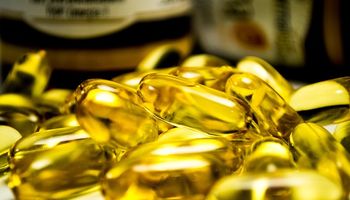Antibiotics:
So-called antibiotics are among drugs that act against infections caused by bacteria. The mechanism of action is based on the action of the antibiotic substance, which attacks the cell wall or metabolism of the bacteria. The following types are distinguished:
- Bacteriostatic antibiotics: These inhibit the growth of the bacteria
- Bactericidal antibiotics: These antibiotics kill foreign bacteria.
On the basis of clinical examinations alone, it is usually possible to distinguish an infection from a viral or bacterial case. In rare cases, however, this can be a difficulty - an efficient way of case investigation is the determination of the c-reactive protein, also called CRP for short. This is a blood value that rises after only a few hours after an infection caused by bacteria. In the case of a positive antibiotic therapy, it can drop again within 24 hours.
If a bacterial infection is suspected, it is possible to determine the pathogen with a bacterial culture. Consequently, bacteria from a blood, urine or secretion sample are cultured and multiplied on a specific nutrient medium. Subsequently, the doctor can precisely determine the cultured bacteria using special examination methods and read the antibiogram (i.e. the result of the laboratory test to determine the sensitivity or resistance of microbial pathogens to antibiotics). The result is usually evident after about two days.
Sensitivity of Fosfomycin:
Because the data collectedfor the antibiotic fosfomycin often do not correlate with the data being observed, susceptibility testing is tricky. This was especially the case until the early 1980s, when there were no standardized regulations for testing against fosfomycin. In vitro activity (i.e. outside the living organism) is dependent on several variables: Type of culture medium, germination seeding and testing technique.
Only recently has the possibility of using a special, recently available, fosfomycin E assay been investigated - which could make the determination of antibiotic susceptibility faster and safer for many pathogens.
Restriction in use:
According to theEuropean Medicines Agency 's( EMA for short) prescribing analysis, the antibiotic fosfomycin, which has been used parenterally (i.e. bypassing the intestinal tract to enter the body) several times in recent years, should have its administration restricted to severe infections.
The current modesty in fosfomycin use for severe bacterial disease may be based on the assumption that there may be a high risk of selection of resistant strains under therapy with the antibiotic. While susceptible bacteria are killed, resistant bacteria may continue to proliferate due to high mutation rates.
Whether such selection of fosfomycin-resistant pathogens occurs frequently in patients receiving therapy with the antibiotic is not yet known.
Resistance and clinical applications:
As with other antibiotics, rapidly acquired resistance to fosfomycin emerged when it was first introduced. In some cases, depending on the bacterial species, the resistance of the pathogens and the region (i.e. both large geographical areas and areas such as hospital wards), there are large differences in the frequencies of resistance. For some bacterial species, frequencies of resistance in one species reach 20% or more, while low rates of resistance have been recorded in other species regardless of region.
The use of fosfomycin in individual EU countries also shows large differences. For intravenous administration, the approved indications differ within the EU. In some EU countries, oral fosfomycin is approved in the indication "prophylaxis for diagnostic and surgical transurethral procedures (i.e., through the urethra)," while in other European Union countries such an indication has not been assessed as appropriate.
In 2018, the German Federal Institute for Drugs and Medical Devices, or BfArM , asked the EMA to reconsider the antibiotic fosfomycin with regard to rising resistance, whereupon a benefit-risk assessment was launched. The reason for this was not only the disagreement regarding indications within the EU, but also the resistance. Since due to a lack of new antibiotic development, anti-infective therapy of diseases caused by multi-resistant bacteria is made more difficult, re-evaluation of older antibiotics should solve this problem.
EMA evaluation:
During the evaluation, the EMA appointed CHMP, a competent committee on medicinal products for human use, which advises that the drug should be used intravenously only when other treatments with antibiotics are not considered appropriate. Such indications include: complicated urinary tract infections, pneumonia (i.e. lung infection) or bacterial meningitis. Oral granules of fosfomycin, which are used for the treatment of uncomplicated bladder infections in women or for the prophylaxis of infections after a prostate biopsy, do not have any limitations of use. Intramuscular preparations used in children should be withdrawn from the market due to insufficient evidence of efficacy.
Clinical experience with fosfomycin exists mainly in the treatment of uncomplicated urinary tract diseases - the antibiotic showed positive efficacy. Fosfomycin used for oral administration is used in some countries, including Germany and Austria, for the specific treatment of uncomplicated urinary tract diseases. In Germany, for example, only oral granules of 3 g and for intravenous infusion Infectofos of 2 g are available for severe infections. Some European countries make oral granules of 2g also available on the market for children.
Conclusion:
Fosfomycin has been a successfully used anti-infective in the treatment of uncomplicated UTI for a long time. However, larger controlled and comparative studies are needed to investigate the significance of this agent in the treatment of infections caused by multidrug-resistant bacteria. Consequently, BfArm wants a new, up-to-date scientific evaluation by the European Medicines Agency for the indication and dosage.
The CHMP's evaluation has been forwarded to the European Commission, which will make a final decision that is legally binding in all EU countries.
Active ingredients:






